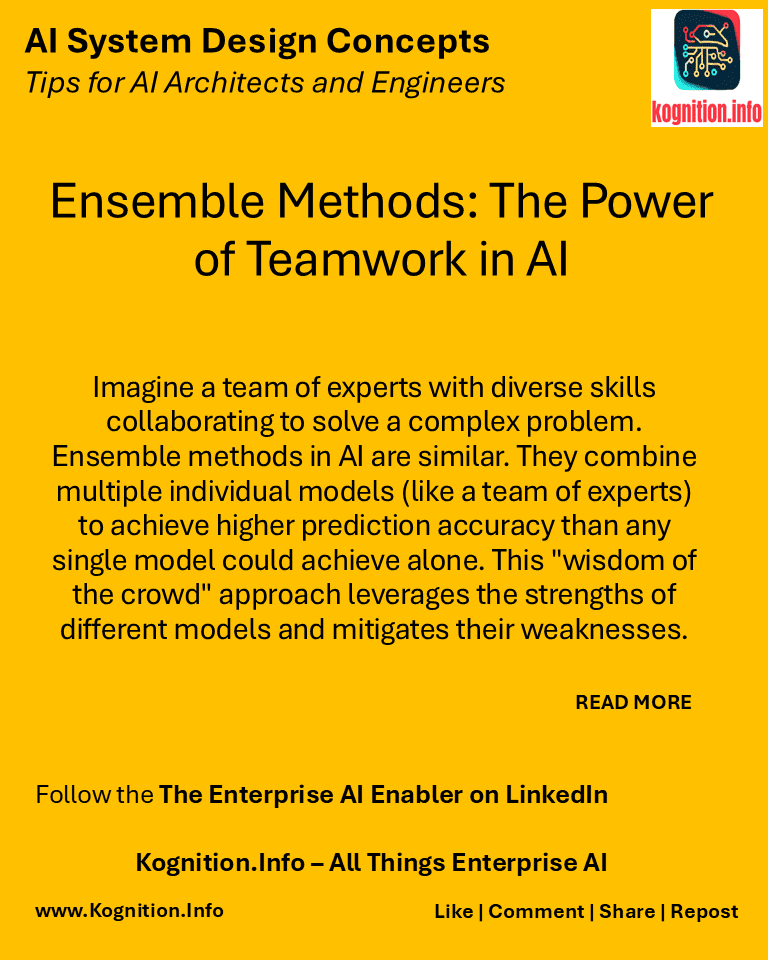
Imagine a team of experts with diverse skills collaborating to solve a complex problem. Ensemble methods in AI are similar. They combine multiple individual models (like a team of experts) to achieve higher prediction accuracy than any single model could achieve alone. This “wisdom of the crowd” approach leverages the strengths of different models and mitigates their weaknesses.
Use cases:
- Improving prediction accuracy: Combining models with different biases can lead to more robust and accurate predictions in tasks like classification or regression.
- Reducing overfitting: Averaging predictions from multiple models can help reduce overfitting and improve generalization.
- Handling uncertainty: Ensemble methods can provide estimates of prediction uncertainty, which is valuable in risk-sensitive applications.
How?
- Choose base models: Select diverse models with different strengths and weaknesses (e.g., decision trees, neural networks, support vector machines).
- Train base models: Train each model independently on the training data.
- Combine predictions: Combine the predictions of the base models using techniques like:
- Bagging: (Bootstrap Aggregating) Train models on different subsets of the data and average their predictions.
- Boosting: Sequentially train models, with each model focusing on correcting the errors of the previous ones.
- Stacking: Train a meta-model to combine the predictions of the base models.
Benefits:
- Increased accuracy: Often leads to significant improvements in prediction accuracy.
- Robustness: Less susceptible to overfitting and noise in the data.
- Improved generalization: Can generalize better to new, unseen data.
Potential pitfalls:
- Increased complexity: Ensemble models can be more complex to train and deploy than single models.
- Interpretability challenges: Understanding the decision-making process of an ensemble can be more difficult.
- Computational cost: Training and deploying multiple models can be computationally expensive.
